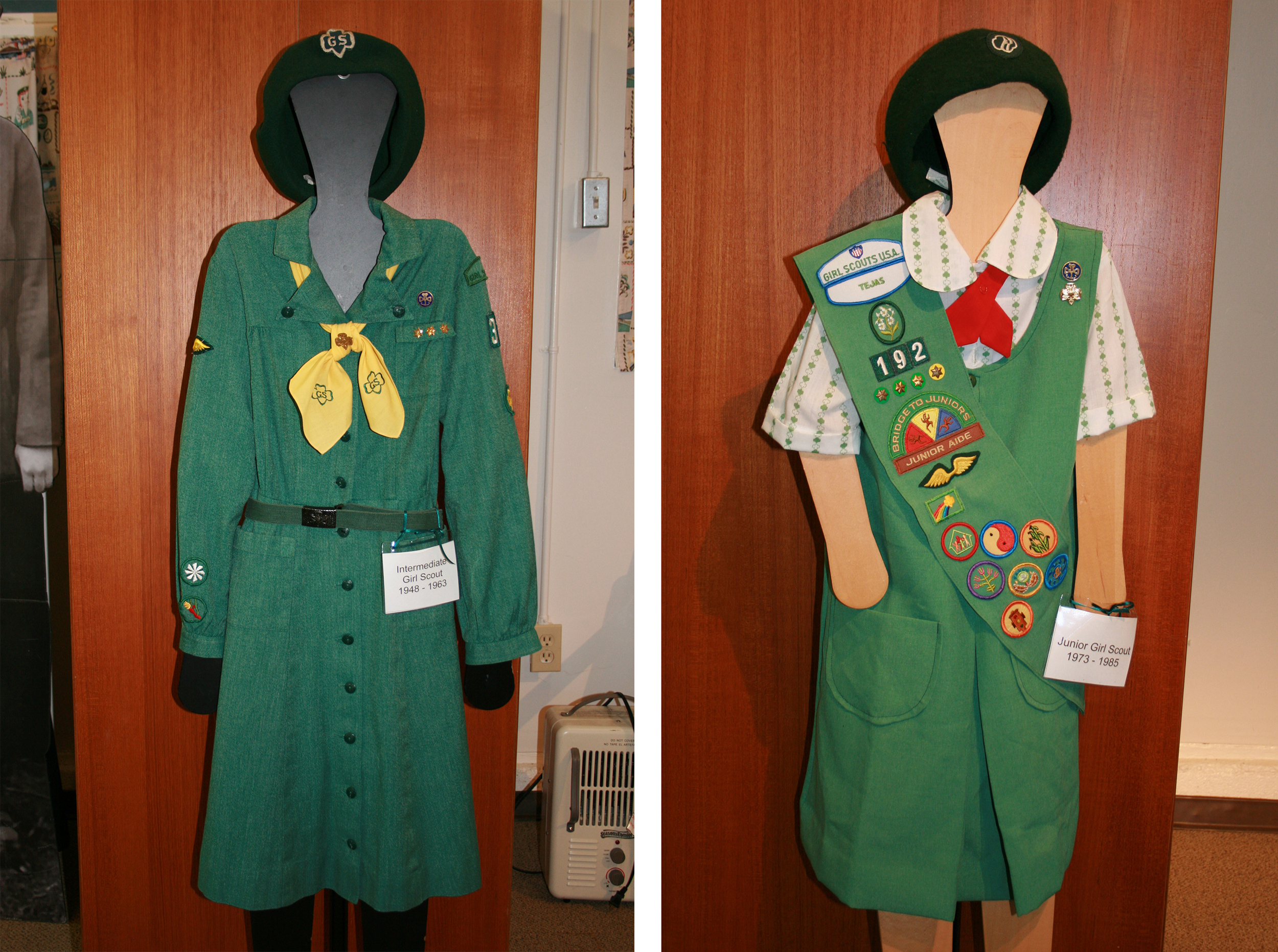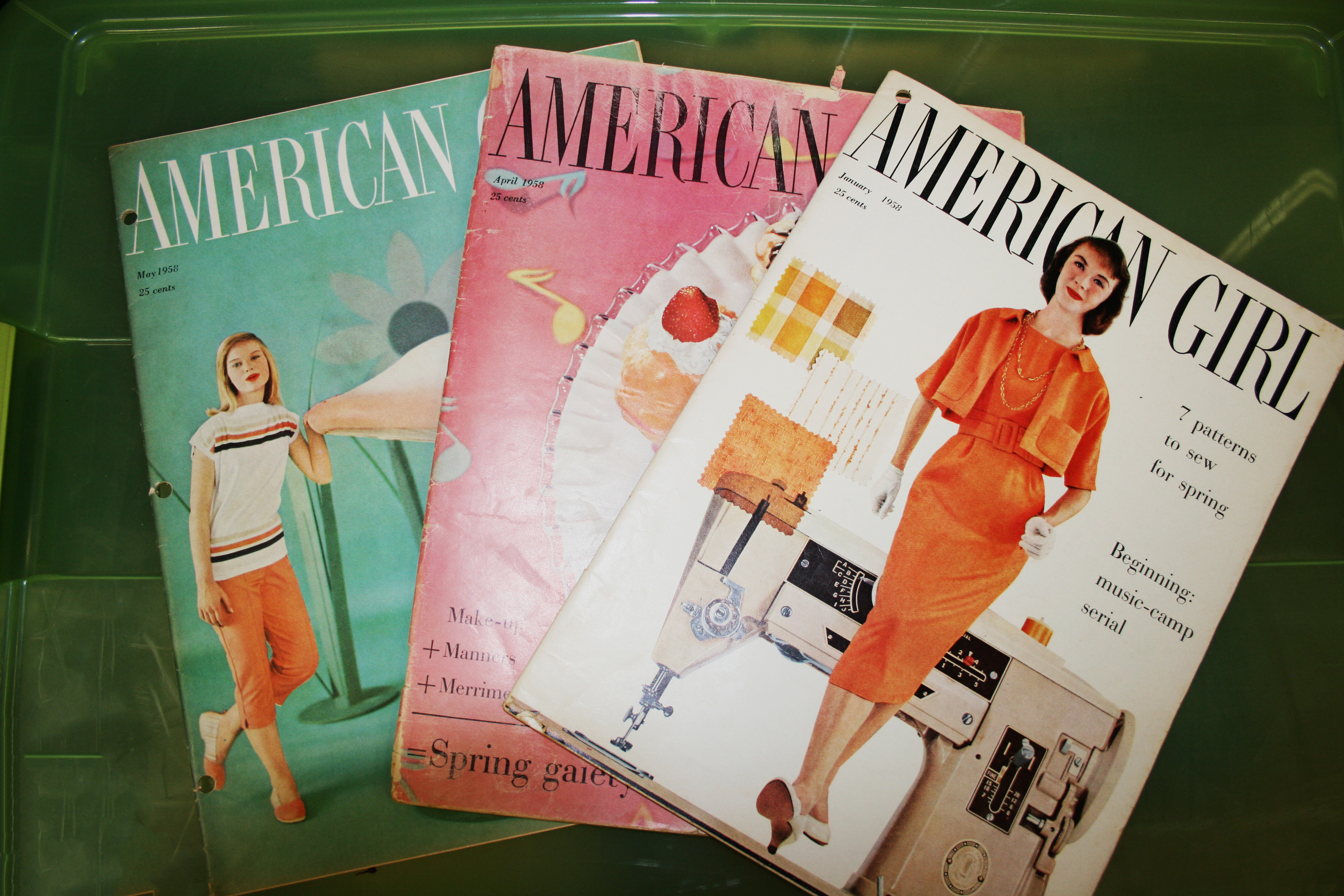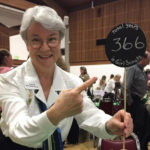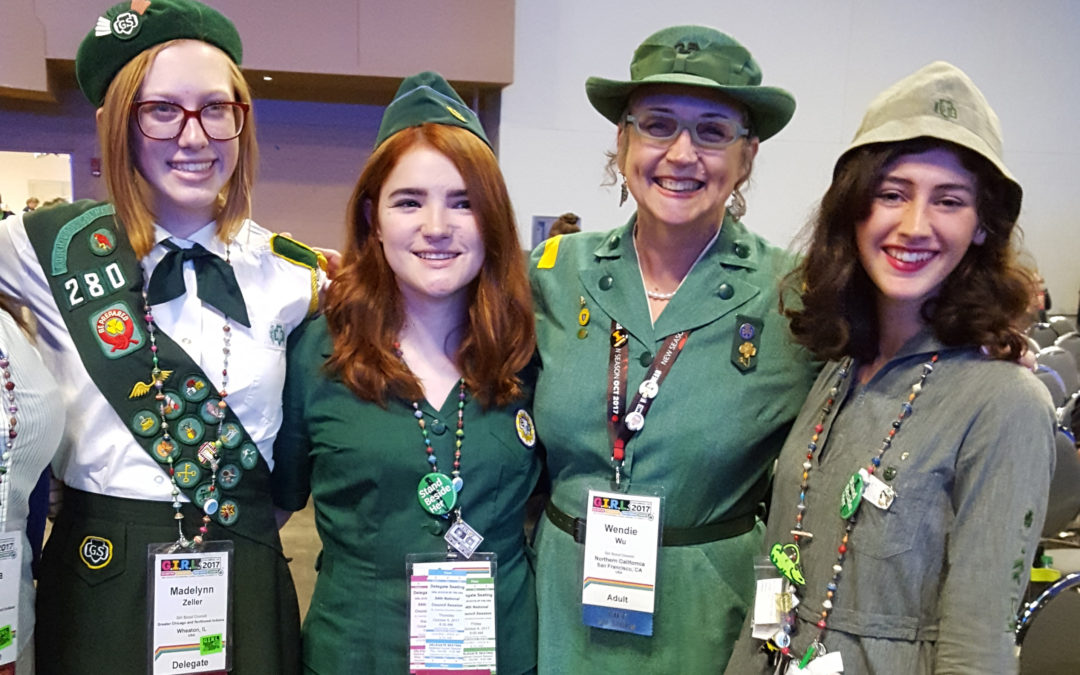Since 1932, March 12 has been observed as the official Girl Scout Birthday with the Sunday through Saturday calendar week including it being referred to first as Birthday Week and now, Girl Scout Week. This year our celebration runs from March 10 – 16.
Pin this post for later!
It’s hard to believe how quickly time has passed since 2012 when we celebrated the 100th Anniversary of Girl Scouting in the United States. Girl Scout Week is a good time to revisit some of the rich Girl Scout history resources that leaders can utilize for troop program. Whether you’re looking for a meeting activity as convenient as a click of your computer’s mouse or a field trip that requires a little extra planning, here are 7 ways you and your girls can connect with our organization’s history for Girl Scout Week.
1. Historical Girl Scout Videos
Did you know that GSUSA maintains their own YouTube channel? Many of the videos are perfect for those looking for a portal to our organization’s past. No need to rummage around for a film projector, VCR, or even a DVD player… you can easily access these digitized films on your computer or mobile device as long as you have an internet connection. Get the popcorn ready!
The playlist Historical Videos has 64 videos ranging from short clips to the entire 1918 film, The Golden Eaglet and the 2011 video biography, The Story of Juliette Gordon Low narrated by Fran Harold, former Director of the Juliette Gordon Low Birthplace in Savannah. For an engaging troop activity, have girls compare and contrast the Girl Scout program and activities depicted in some of the videos with their contemporary Girl Scout experiences.
The playlist A Moment in Girl Scout History has 9 videos which present very brief slideshow format looks at some of the badges from earlier eras including Pioneer (1913), Canner (1920), and Radio & Television (1953).
2. Vintage Uniforms (and the women who wore them)
Mothers, grandmothers, great grandmothers, or other friends and family members may have kept their uniforms, sashes, or vests as keepsakes of their own time spent as Girl Scouts. Network in your Service Unit to find women who have their own scouting stories to tell and invite them to a troop meeting. Ask them to share their uniforms and talk about their badges and Girl Scout memories.
Consider renting some historical uniforms from one of the council uniform lending collections. Information can be found on the Girl Scout Heritage page of the Girl Scouts of Northern California website. Perhaps your troop might want to wear vintage uniforms in a community parade or other event, or plan a uniform fashion show for other troops. Uniforms must be reserved in advance, so plan ahead.

3. Historical Handbooks and Badge Books
A treasure trove of information about Girl Scouting in past decades is available by looking through early editions of handbooks or badge books. Handbooks and badge requirements allow girls to see the types of activities girls their age participated in. Have them discuss how program interests and badge designs have evolved over the years… some may have changed dramatically and others may seem remarkably recent! Surprisingly, STEM activities are nothing new for Girl Scouts. Have girls talk about how some of the early badges incorporated emerging technology of the era, then let the girls try out a few of the early badge activities if they wish.
Ask around your Service Unit to see if anyone has previous editions of handbooks or badge books they would be willing to share. Public libraries, used book stores, or online used book sellers are other wonderful sources. Remember, you don’t have to search for rare editions—even a handbook from the 1980’s is “old” to today’s girls!
If you are unable to locate a physical copy of an early handbook, the digitized version of the 1920 handbook, Scouting for Girls is available free through Project Gutenberg and can be read in its entirety online or downloaded in EPUB, Kindle, or other e-book formats.
4. Eat Like a 1927 Girl Scout!
The campfire delight we know as a s’more has long been associated with Girl Scouts, and with good reason! In 1927, Girl Scouts published Tramping and Trailing with the Girl Scouts, which contains the very first recipe for “Some More” to appear in print. Here is the generously portioned original recipe:
8 sticks 16 graham crackers
8 bars plain chocolate (any of the good plain brands broken in two)
16 marshmallows
Toast two marshmallows over the coals to a crisp gooey state and then put them inside a graham cracker and chocolate bar sandwich. The heat of the marshmallow between the halves of chocolate bar will melt the chocolate a bit. Though it tastes like “some more” one is really enough.
Have the girls brainstorm variations of this campfire classic and try out their own creative s’mores recipes. Experiment with different flavored graham crackers, or substitute chocolate with apple slices, minty chocolate, nut butters, or white chocolate. No campfire? Try heating the marshmallows briefly in a microwave.
5. Girl Scout Magazines
Beginning in 1917, Girl Scouts began publishing a variety of magazines just for girls. The most well-known of these continued in print until 1979 and was known for most of its publication run as American Girl (no relation to the magazine currently published under the same title). Over the years other magazines like Brownie Reader, Daisy, and Girl Scout Leader were developed for younger girls and for leaders. All are now out of print.
These magazines provide a priceless archive of “girl culture” as it developed through the better part of the 20th century. American Girl contained articles about scouting activities, fashion, health and fitness, travel, money management, and much more. Most issues also had a fiction feature. Since the magazine contained advertising of the era, they are also a great resource for understanding the changing landscape of American consumer culture. Older girls with an interest in women’s history might find this a rich source of research material.
 Because of their less durable format, the magazines are a bit harder to come by, but there are multiple collections of them archived by the council Heritage Committee. We understand that GSUSA is currently engaged in a project to digitize many of their printed resources and hopefully these historical publications will soon be available electronically. Until then, contact Member Services at 800-447-4475 and ask for a referral to a local Heritage Committee member who can help you locate a magazine archive.
Because of their less durable format, the magazines are a bit harder to come by, but there are multiple collections of them archived by the council Heritage Committee. We understand that GSUSA is currently engaged in a project to digitize many of their printed resources and hopefully these historical publications will soon be available electronically. Until then, contact Member Services at 800-447-4475 and ask for a referral to a local Heritage Committee member who can help you locate a magazine archive.
6. Visit the Heritage Museum or a Council Office Exhibit
The Heritage Committee of Girl Scouts of Northern California maintains a museum on the grounds of Camp Bothin in Marin County. The museum has permanent exhibits of Girl Scout uniforms, handbooks and other program materials, badges and insignia, textiles, camp equipment, periodicals, posters, photos, and all manner of Girl Scout memorabilia. Some of the artifacts, such as the Camp Chaparral “jerkin book” and local girls’ scrapbooks are unique and found nowhere else in the country.
Museum visits must be booked in advance to allow time to schedule docents, and we are happy to address any specific program goals you may have. To book a museum visit, contact Dorothy Brown at dotbrown@aol.com or by phone at 415-479-2390.
Seasonally rotating exhibits of historical material can be viewed at the council offices in Alameda, San Jose, and Chico whenever the offices are open. Other collections are available at the Scout Hut in Rohnert Park, and in some private homes of Heritage Committee members. Contact Member Services at 800-447-4475 to get connected to the Heritage Committee Member in your area who can let you know what items are on display.

7. Plan a trip to the Juliette Gordon Low Birthplace
Where better to connect with Girl Scout history than the Juliette Gordon Low Birthplace in the beautiful city of Savannah, Georgia. Girl Scouts of all ages can take the house tour, learn more about our founder “Daisy” Low, and experience the award-winning interactive exhibit, Girls Writing the World. Girl Scouts who tour the Birthplace are then considered “daughters of the house” and eligible to wear the Birthplace pin on their uniforms! Troops Junior level and older can register to participate in a variety of troop programs including the memorable afternoon tea. If someone in your Service Unit has visited the Birthplace, invite them to share their experience and perhaps inspire your girls to start long range planning for their own amazing troop getaway to Savannah!
Whatever you and your girls end up doing during Girl Scout Week, we hope you spend some time reconnecting with our organization’s history.
Happy Birthday, Girl Scouts!
 Anne Mahoney—Anne is a Lifetime Member of Girl Scouts and the mother of two grown daughters who were also Girl Scouts. She has been a member of the Heritage Committee of Girl Scouts of Northern California since 1999. Her particular interests in working with the Heritage Committee are badges, periodicals, handbooks, and the evolution of Girl Scout program over the years. She works at the Novato Library and is known for her midnight s’mores and marshmallow toasting at the annual Teen Lock-In!
Anne Mahoney—Anne is a Lifetime Member of Girl Scouts and the mother of two grown daughters who were also Girl Scouts. She has been a member of the Heritage Committee of Girl Scouts of Northern California since 1999. Her particular interests in working with the Heritage Committee are badges, periodicals, handbooks, and the evolution of Girl Scout program over the years. She works at the Novato Library and is known for her midnight s’mores and marshmallow toasting at the annual Teen Lock-In!


